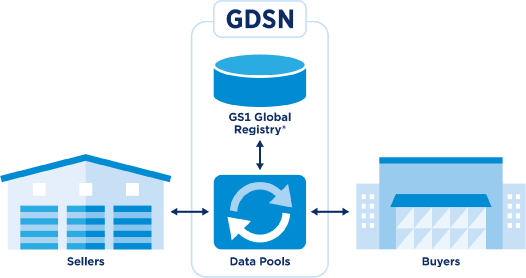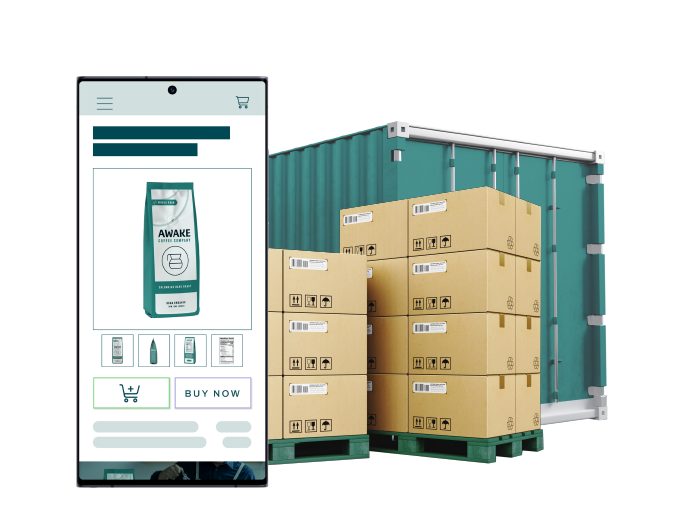
Mit GDSN® Daten sicher austauschen, synchronisieren und profitieren.
Sie haben ein gutes Produkt, das in den Handel will? Dann wird es höchste Zeit, ihm einen Platz in den vordersten Rängen einzuräumen. Doch ganz gleich, ob Sie Ihr Produkt im Einzelhandel, auf Online-Marktplätzen, in Deutschland, oder Spanien platzieren möchten: Was Sie brauchen ist eine Plattform für Produkt Content, die einen digitalen Datenaustausch per GDSN® ermöglicht. Denn mit GDSN® können Stammdaten zwischen Geschäftspartnern rund um den Globus effizient ausgetauscht und automatisch synchron gehalten werden.
Das spart Zeit, reduziert Kosten und vermeidet Fehler.
GS1 GDSN® – das Netzwerk für Produktinformationen
Das GS1 Global Data Synchronization Network (GS1 GDSN®) existiert seit 2004 und ist das weltweit größte Netzwerk für Produktinformationen. Unter Berücksichtigung gesetzlicher Pflichtangaben ermöglicht das GS1 GDSN® jedem Unternehmen auf jedem Markt qualitativ hochwertige Produkinformationen nahtlos auszutauschen. Alle Daten werden zentral in einem GS1 GDSN®-Datenpool hinterlegt und können hierüber synchronisiert werden. Davon profitieren sowohl Datensender als auch Datenempfänger und selbstverständlich auch der Shopper.
Hersteller erfassen ihre Produktinformationen einmalig in einem einzigen, zentralen Datenpool – selbst wenn die Artikel in Spanien oder Übersee platziert werden sollen. Zusätzlich schaffen sich Lieferanten innerhalb des Unternehmens einen zentralen Katalog für qualitätsgeprüfte Produktdaten.
Händlern werden sämtliche Produktstammdaten an einer zentralen Stelle zur Verfügung gestellt – und das völlig unabhängig vom Hersteller. Diese können dann für die unterschiedlichsten Verwendungszwecke (E-Commerce, Retail, App, Print etc.) abrufen werden.
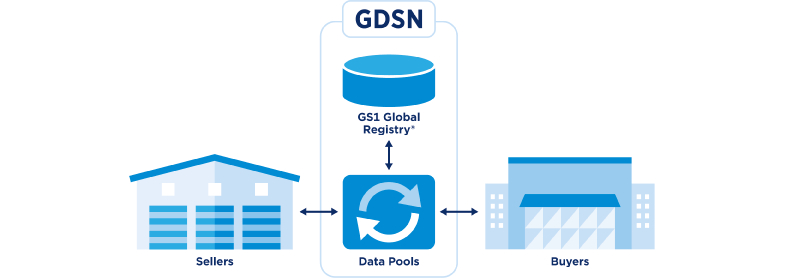
Dank etablierter Standards sicher zum Erfolg.
Der Handel benötigt für sämtliche Geschäftsprozesse (Einkauf, Logistik, Disposition, Verkauf etc.) Produktinformationen wie Bezeichnung, Maße und Gewicht. Und zusätzlich müssen gesetzlichen Vorgaben eingehalten werden, an denen weder junge Start-ups noch große Markenhersteller vorbeikommen. Daher müssen die Produktstammdaten so aufbereitet und optimiert werden, dass sie den EU-Vorschriften entsprechen und gleichzeitig Kunden und Händler zufriedenstellen.
Das GDSN ist ein global agierendes standardisiertes Netzwerk, um das eine Reihe an GS1-zertifizierten Datenpools kreisen. In diesen Datenpools stehen die Daten zum digitalen Austausch per GS1 GDSN bereit. Damit das alles reibungslos abläuft, verfügen die Datenpools über standardisierte Datensätze. So ist sichergestellt, das Datensendern und Datenempfängern relevante Information an allen Orten der Welt in Echtzeit auszutauschen und zu synchronisieren können: Ändert z. B. ein Datensender die Maße seines Produkts, wird der Datenempfänger (z. B. ein Handelsunternehmen) umgehend hierüber informiert.
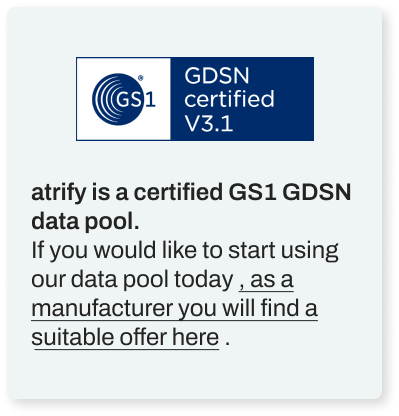
GS1 GDSN-Datenkommunikation – enorme Vorteile für Ihr Unternehmen
- Alle nötigen Standards werden automatisch eingehalten. Dabei werden die Validierungsregeln des GS1 GDSN, des Zielmarktes und der Empfänger berücksichtigt.
- Sie profitieren von einer zentralen Datenpflege (Single Source of Truth) in unserem Datenpool und benötigen nur einen Datensatz für alle Empfänger.
- Teilen Sie Produktinhalte in Echtzeit mit allen Handelspartnern gleichzeitig.
- Sie erhöhen die Qualität ihrer Produktinformationen durch Eliminierung manueller Prozesse. Dadurch sparen Sie nicht nur Zeit und Kosten für die Datenverwaltung, sondern es werden auch Fehler und lückenhafte Angaben vermieden.
- Bringen Sie neue Produkte schnell und einfach auf den Markt.
- Ermöglichen Sie Markentransparenz für den Handel und Konsument:innen.
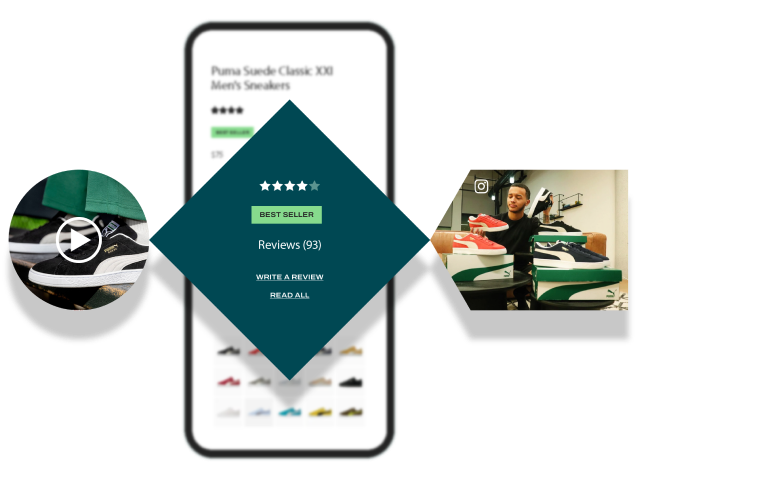

Artikelinformationen sind in vielerlei Hinsicht essentiell
Werfen wir einen Blick auf die Logistik im Einzelhandel. Hier zeigt sich schnell, die zentrale Rolle der Artikelinformationen: Täglich werden LKW beladen, um den Lebensmittelhandel mit neuer Ware zu versorgen. Und jedesmal wird exakt kalkuliert, wie viel Transportkapazität vorhanden ist. Dazu sind Informationen bezüglich der Maße notwendig, aus denen man das Volumen und damit die genau benötigte Anzahl der LKW berechnen kann. Unpräzise Messung oder fehlende Angaben sind fatal für die Tourenplanung und enden oft in Zusatztouren oder Transportflächen bleiben ungenutzt.
Ihr Produkt soll in den Handel?
Jetzt atrify
publishing besorgen und Produktinfomationen an Handelspartner publizieren!
Mehr Effizienz: standardisierte Informationen global im Einsatz
Mit der Globalisierung von Handel und Wirtschaft öffnen sich für Firmen neue Märkte. Es kann somit nicht nur ein Zielmarkt beliefert werden, sondern viele. Der internationale GS1 Standard bietet hier eine starke und solide Grundlage, damit Ihre Produktdaten länderübergreifend und verständlich untereinander austauschen können. Von der technischen Seite betrachtet, arbeitet das GS1 GDSN mit standardisierten Informationseinheiten (sog. Attributen) wie beispielsweise die “Artikelbeschreibung”. So weiß weltweit jeder Hersteller und Händler, dass es sich hierbei um die Beschreibung des Produktes handelt – und nicht etwa um einen Marketingtext. Es gibt auch branchenspezifische Attribute, beispielsweise für die Lebensmittelindustrie. Das wären in diesem Fall Attribute für bestimmte Ernährungstypen, die Werte wie z.B. glutenfrei, vegan, vegetarisch, für Diabetiker geeignet, aber auch halal oder koscher definieren.

GS1 GDSN-Glossar
Artikelstammdaten sind Informationen über Produkte und deren Eigenschaften die zwischen Handelspartnern ausgetauscht werden. In einer modernen Logistikkette sind Stammdaten in elektronischer Form unverzichtbar und Bedingung für den Produktlistungsprozess der meisten Handelsunternehmen – also dafür um in das Angebot einer Einzelhandelskette aufgenommen zu werden.
1WorldSync nutzt zur Übermittlung der Stammdaten das Global Data Synchronization Network – kurz GDSN. Alle Produktdaten werden zentral in einem Datenpool gespeichert, verwaltet und freigegeben. Ihr könnt Eure Produktinformationen allen angeschlossenen Handelspartnern zur Verfügung stellen oder auch einzelne individuell auswählen (beispielsweise nach Zielmarkt oder GLN).
GDSN steht für Global Data Synchronisation Network (GDSN). Mit dem GDSN werden Produktstammdaten global zwischen Herstellern und Händlern ausgetauscht. Dabei müssen die Daten nur in einen einzigen Datenpool eingestellt werden. Das GDSN verbindet weltweit 30 zertifizierte Datenpools, an die fast 25.000 Unternehmen angeschlossen sind. Um Artikel im GDSN eindeutig identifizieren zu können gibt es Schlüsselfelder. Einige dieser Schlüsselfelder sind die GTIN, die GLN (Global Location Number), der Zielmarkt (Target Market, kurz TM), und die Global Product Classification (GPC).
Ein Produklisting ist ein Eintrag in den Warenkatalog eines Einzelhändlers. Die Bereitstellung von Stammdaten geschieht heutzutage fast nur noch in elektronischer Form. Dies ist für ein Listing bei den großen Handelsketten meistens Bedingung um in den Warenkatalog aufgenommen zu werden. Mit atrify publishing könnt ihr dem Handel die Daten in der gewünschten Form zentral mit nur einer Datenbank zur Verfügung stellen.
Die GTIN ist eine eindeutige Produkt-ID. Sie besteht aus 14 numerischen Zeichen,
die nicht nur den Artikel selbst, sondern auch dessen Verpackungseinheiten
identifiziert. Also den Basisartikel, den Karton oder die Palette. Wichtig zu
wissen: Mit einer GTIN können separate Artikeleinträge für das gleiche Produkt
auf unterschiedlichen Verpackungsebenen abgebildet werden. Die GTIN wird per
Strichcode verschlüsselt. Durch das Auslesen des Strichcodes sind Unternehmen in
der Lage, Informationen über Produkte effizient und zentral zu verarbeiten. Eine
GTIN benötigst du für den elektronischen Stammdatenaustausch und wird von vielen
Einzelhandelsketten bei einem Listing gefordert.
Eine GTIN kann schnell
und unkompliziert auf der Seite der GS1
Germany bestellt werden.
Ein Zielmarkt ist ein klar abgegrenzter Bereich und definiert wo ein Hersteller seine Produkte in den Handel bringt. Um zu identifizieren in welchem Land ein Artikel gehandelt werden soll wird ein Ländercode verwendet, der sogenannte Target Market.
Cloudbasiert, komfortabel, transparent und markenspezifisch. Das ist atrify. Denn
hierüber kann man lückenlos Produktinhalte mit Handelspartnern rund um den
Globus austauschen. Einmal erfassen – hundertfach verwenden: Sie erfassen Ihre
Produktinformationen einmal mit atrify publishing, unserer webbasierten
Anwendung für Lieferanten und Produkthersteller. Diese Informationen stellen Sie
mit einem Klick unzähligen Empfängern wie z.B. Handelsunternehmen,
Großhandelsunternehmen, Apps etc. zur Verfügung. Das spart Zeit, reduziert
Kosten, vermeidet Fehler – und ist einfach praktisch.
Ganz nebenbei schaffen Sie einen zentral gespeicherten
Produktdatenkatalog – alle Produktdaten werden zentral im atrify datapool
gespeichert, verwaltet und freigegeben. Wir arbeiten für höchste Qualität Ihrer
Produktstammdaten. Alle erfassten Daten werden zuverlässig und umfassend
validiert und entsprechen den gängigen Standards und Regularien wie z.B. EU
LMIV.
Zudem bieten wir Ihnen umfangreiche Unterstützung für alle Themen rund
um Ihren Produkt Content. Profitieren Sie von einem großen Netzwerk an
Fachexperten, die jungen Start-ups den Einstieg erleichtern und langjährige
Kunden weiter nach vorne bringen.
Der atrify datapool ist einer der weltweit größten GDSN Stammdatenpools. Zum einen, was die Anzahl der angebundenen Kunden angeht. Zum anderen, wenn die Anzahl der verzeichneten Artikel gemeint ist. Alle Produktdaten werden zentral im atrify datapool gespeichert, verwaltet und freigegeben. Dabei können Sie aus dieser einen Datenquelle alle für Sie relevanten Handelspartner erreichen und ganz individuell auswählen, z.B. nach Zielmarkt oder GLN. Alle hinterlegten Daten sind zuverlässig validiert und entsprechen den gängigen Standards und Regularien wie z.B. EU LMIV. Außerdem können einzelne Artikel oder Artikelgruppen als Excel- oder PDF-Artikelpass exportiert oder Digital Assets wie Produktabbildungen, Video oder Sicherheitsdatenblätter geteilt werden. Ein unverzichtbares Feature von atrify sind umfangreiche und speicherbare Suchprofile. Dadurch haben Sie die Möglichkeit, nach einzelnen Attributen, nach Datum oder bestimmten Textpassagen zu suchen.
Unsere Benutzeroberfläche atrify publishing bietet dir intelligente Features um
dich im Arbeitsalltag dort zu unterstützen wo es nötig ist. Dabei helfen dir
unter anderem Machine Learning, Dynamic UI und GPC Prediction. Außerdem sind wir
an ein breites Netzwerk an Fachexperten angeschlossen.
Wir haben beste Kontakte in den Handel, und sind deswegen DIE Lösung für
Stammdatenaustausch. Mit atrify publishing habt ihr die Möglichkeit mit nur
einer zentralen Datenquelle alle relevanten Handelspartner mit euren Daten zu
erreichen. Vorbei die Zeit der Zeit verschiedener Datenbanken und Insellösungen!
Als einer der größten Datenpoolbetreiber hat Sicherheit, Zuverlässigkeit
und eine stabile Systemverfürbarkeit für uns oberste Priorität. Geprüfte und
valide Daten werden von uns durch die im System implementierten
Validierungsregeln sichergestellt.
Klingt gut? Ist es auch! Deswegen haben wir uns dazu entschieden euch
als Start-ups den Weg in die Welt des Produkt Contents zu erleichtern und einen
Baukasten entwickelt mit dem ihr so arbeiten könnt wie ihr es braucht, ganz ohne
Schnickschnack! Alles weitere was du dazu wissen musst erfährst du in unserem
Store.
1WS offers Onboarding support in English, Spanish, French, German, Polish, Portugese, Mandarin and Cantonese.
Im atrify publishing unterstützen Sie die online Hilfe-Funktion und zahlreiche
Produktvideos. Zudem bieten wir Ihnen umfangreiche Möglichkeiten Ihr Wissen rund
um das Thema Produkt Content zu erweitern. Nutzen Sie unsere Digital Academy zur
Self-Education, unsere Online-Schulungen oder auch unsere individuellen Vor-Ort
Workshops.
Ab der Tarifgruppe Professional stehen Ihnen bei konkreten Fragen zur
Nutzung von atrify publishing, und sonstigen technischen Anfragen,: unser
Support Team von Montag bis Freitag, 8:00–18:00 Uhr telefonisch oder per E-Mail
zur Verfügung: +49 221 93373-333 oder servicedesk@1worldsync.atlassian.net
Zudem können Sie unsere Support-Pakete nutzen, um sich per Telefon
persönlich beraten zu lassen oder per E-Mail auszutauschen.
